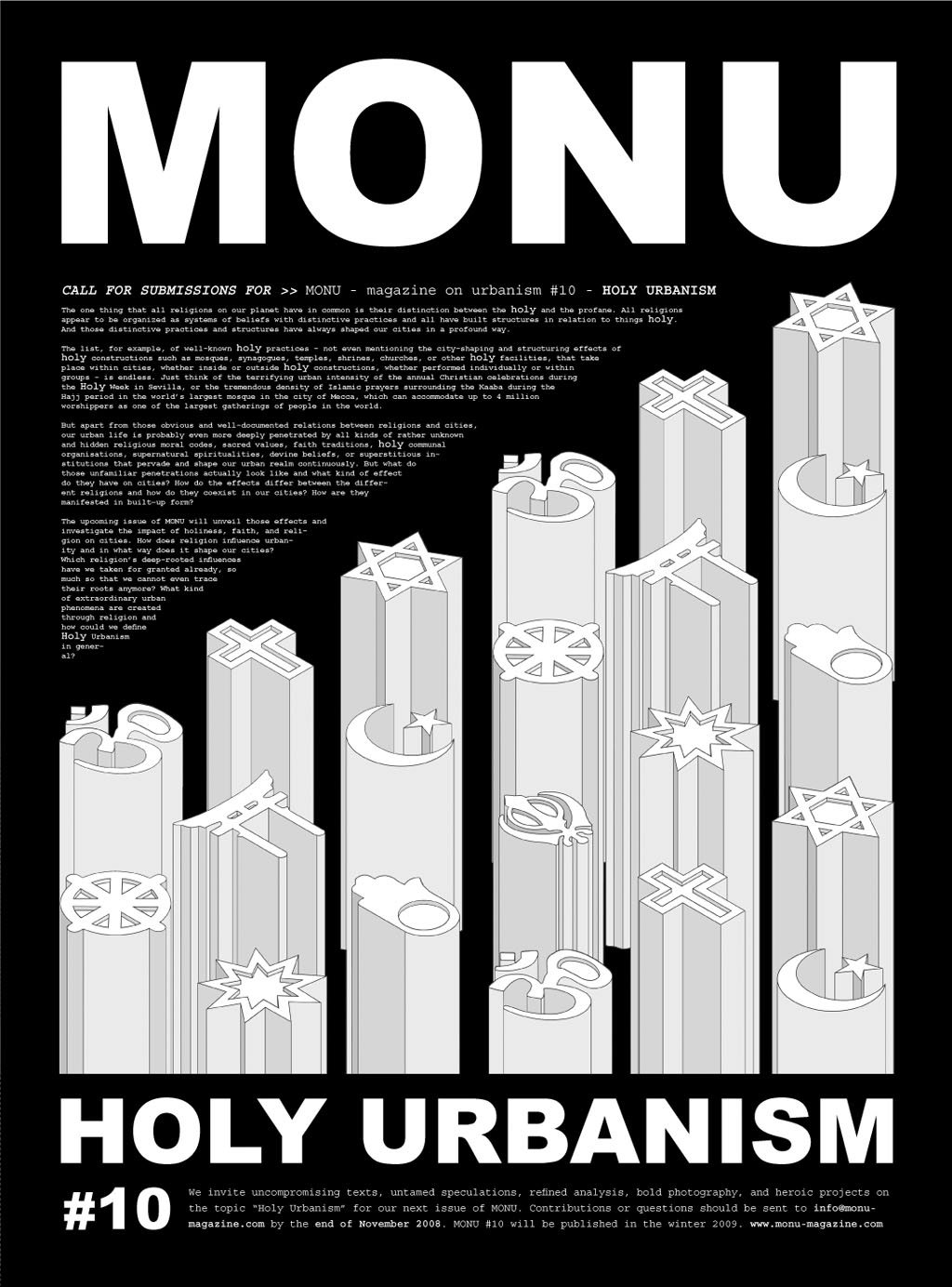22-09-08 // HOLY URBANISM

“Call for Submissions”- Poster for MONU #10, September 2008
Holy Urbanism
By Bernd Upmeyer
The one thing that all religions on our planet have in common is their distinction between the holy and the profane. All religions appear to be organized as systems of beliefs with distinctive practices and all have built structures in relation to things holy. And those distinctive practices and structures have always shaped our cities in a profound way.
The list, for example, of well-known holy practices – not even mentioning the city-shaping and structuring effects of holy constructions such as mosques, synagogues, temples, shrines, churches, or other holy facilities, that take place within cities, whether inside or outside holy constructions, whether performed individually or within groups – is endless. Just think of the terrifying urban intensity of the annual Christian celebrations during the Holy Week in Sevilla, or the tremendous density of Islamic prayers surrounding the Kaaba during the Hajj period in the world’s largest mosque in the city of Mecca, which can accommodate up to 4 million worshippers as one of the largest gatherings of people in the world.
But apart from those obvious and well-documented relations between religions and cities, our urban life is probably even more deeply penetrated by all kinds of rather unknown and hidden religious moral codes, sacred values, faith traditions, holy communal organisations, supernatural spiritualities, devine beliefs, or superstitious institutions that pervade and shape our urban realm continuously. But what do those unfamiliar penetrations actually look like and what kind of effect do they have on cities? How do the effects differ between the different religions and how do they coexist in our cities? How are they manifested in built–up form?
The upcoming issue of MONU will unveil those effects and investigate the impact of holiness, faith, and religion on cities. How does religion influence urbanity and in what way does it shape our cities? Which religion’s deep-rooted influences have we taken for granted already, so much so that we cannot even trace their roots anymore? What kind of extraordinary urban phenomena are created through religion and how could we define Holy Urbanism in general?
Title: Holy Urbanism
Author: Bernd Upmeyer
Date: September 2008
Type: Call For Submissions for MONU
Publications: MONU – Magazine on Urbanism
Location: Rotterdam, The Netherlands